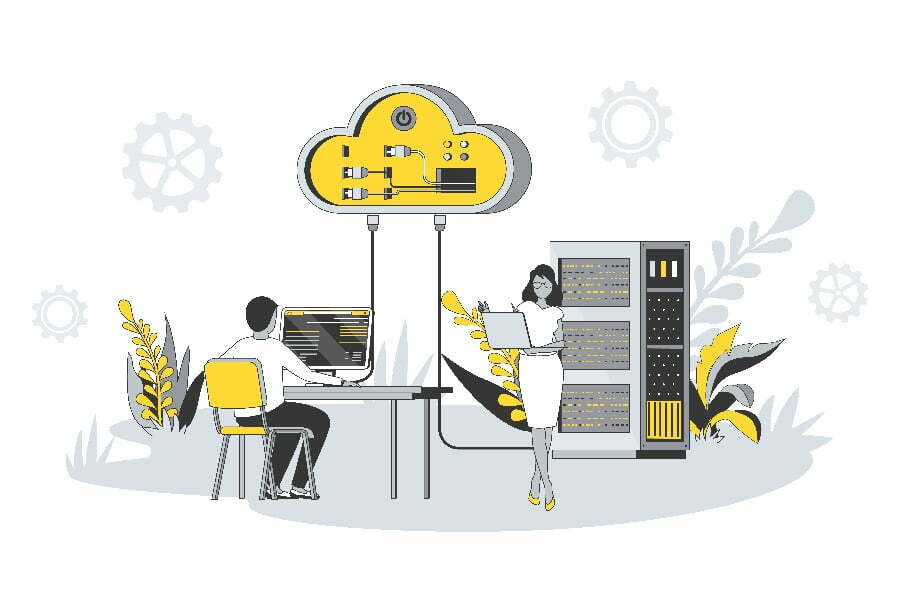Cloud hosting supports monitoring tools by providing access to a wide range of services and features that enable users to monitor their applications and infrastructure in real-time.
This includes access to metrics, logs, traces, events, and alerts for improved visibility into the health and performance of their applications.
Cloud hosting provides the ability to use monitoring and observability tools to gain visibility into the performance of applications and services. These tools can help ensure that applications are running optimally, identify potential issues, and help you make informed decisions about system changes.
In this blog post, we’ll explore how cloud hosting supports monitoring and observability tools so you can get the most out of your cloud-hosted environment.
Cloud hosting enables the use of monitoring and observability tools by providing a secure, cost-effective platform for storing data and running applications. This allows users to quickly deploy monitoring and observability tools to capture real-time metrics, gain insights into system performance, and troubleshoot issues.
Cloud hosting makes it easy to scale up or down as needed to accommodate changing workloads.
Infrastructure As a Service (IaaS)

Infrastructure as a Service (IaaS) provides users access to virtualized computing resources such as servers, storage, and networking. With IaaS, users can quickly provision and scale their infrastructure on demand without purchasing or managing physical hardware.
This makes it an ideal platform for monitoring and observability tools since they can be deployed quickly and easily in the cloud environment. IaaS allows organizations to take advantage of the scalability of the cloud by enabling them to increase or decrease their resources based on their needs.
This makes it easier for organizations to monitor their applications in real time without worrying about overprovisioning or underprovisioning resources.
Platform As a Service (PaaS)

Platform as a Service (PaaS) provides users with an environment to develop, run, and manage applications without controlling the underlying infrastructure. It allows developers to focus on building their applications instead of worrying about server maintenance or other technical tasks.
PaaS also makes deploying monitoring and observability tools such as log aggregation, application performance management (APM) and distributed tracing easier. These tools can monitor the performance of applications in real-time, detect issues quickly, and identify potential areas for improvement.
PaaS enables organizations to scale their resources up or down depending on their needs without investing in additional hardware or software licenses. This makes it easier for organizations to take advantage of monitoring and observability tools while keeping costs low.
Software As a Service (SaaS)
Software as a Service (SaaS) allows users to access software applications over the internet. With SaaS, users can access and use the software without installing it on their computers or servers.
This makes it easier for businesses to quickly deploy monitoring and observability tools to gain insights into their systems and operations. The advantage of using SaaS for monitoring and observability tools is that it eliminates the need for companies to purchase, install, configure, maintain, and upgrade these tools themselves.
Instead, they can subscribe to a service provider who will provide them with all the necessary resources to run these tools in the cloud. This saves time and money while also providing more flexibility when scaling up or down depending on user needs.
Since all data is stored in the cloud rather than locally on-premises servers or computers, businesses have greater control over security measures such as encryption protocols which helps protect sensitive information from unauthorized access.
Monitoring Tools
Monitoring tools track the performance of cloud hosting services. These tools can be used to measure the availability, latency, and throughput of a service.
They can also detect any potential issues or problems with the service, such as outages or slowdowns. Monitoring tools can provide insights into how users interact with a service and what areas need improvement.
By using these tools, cloud hosting providers can ensure that their services remain reliable and performant for their customers.
Observability Tools
Observability tools allow users to monitor and analyze the performance of their cloud-hosted systems. These tools provide visibility into the system’s behavior, allowing users to identify potential issues before they become problems.
They can also track usage patterns, detect anomalies, and measure performance metrics such as latency and throughput. By providing real-time insights into system health, observability tools help ensure that cloud hosting environments remain reliable and secure.
These tools can troubleshoot issues quickly when they arise, helping organizations maintain uptime and reduce downtime costs.




